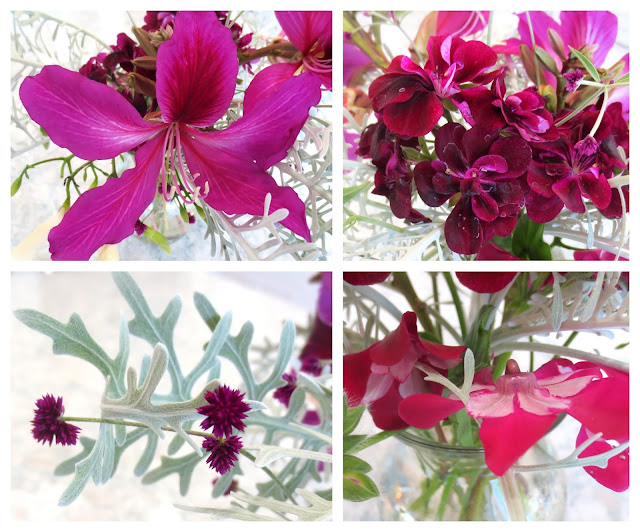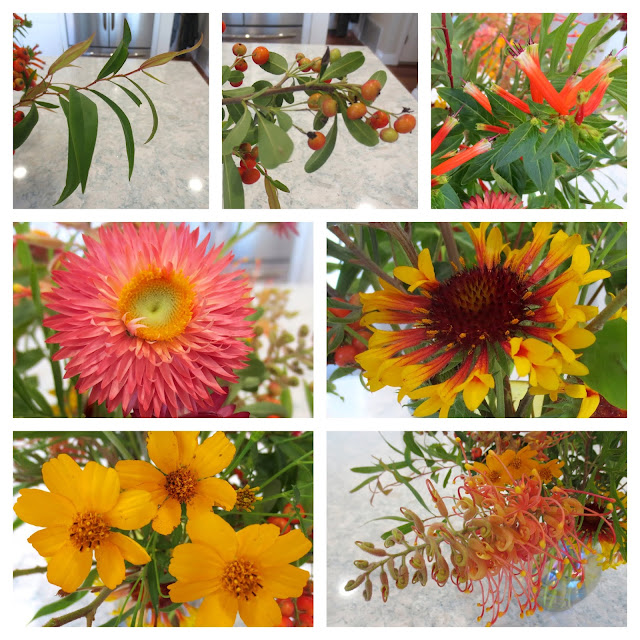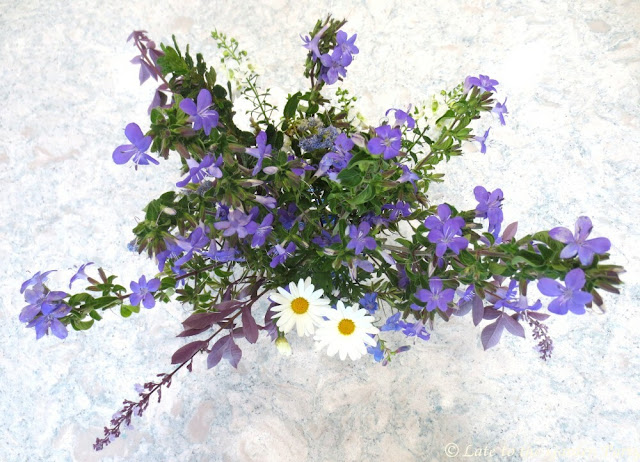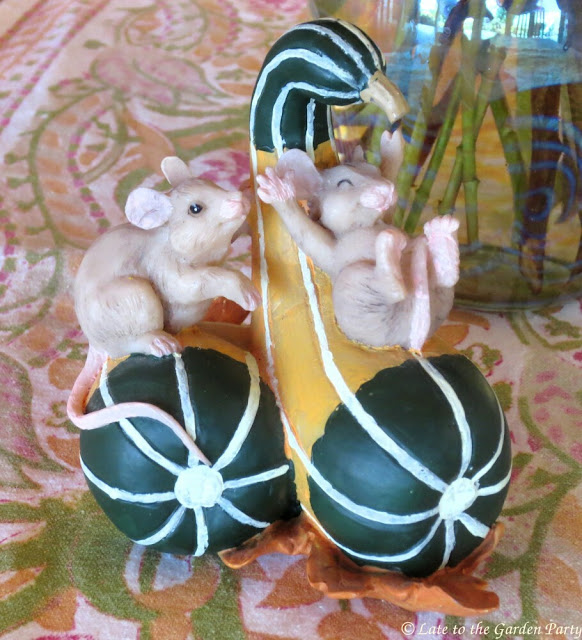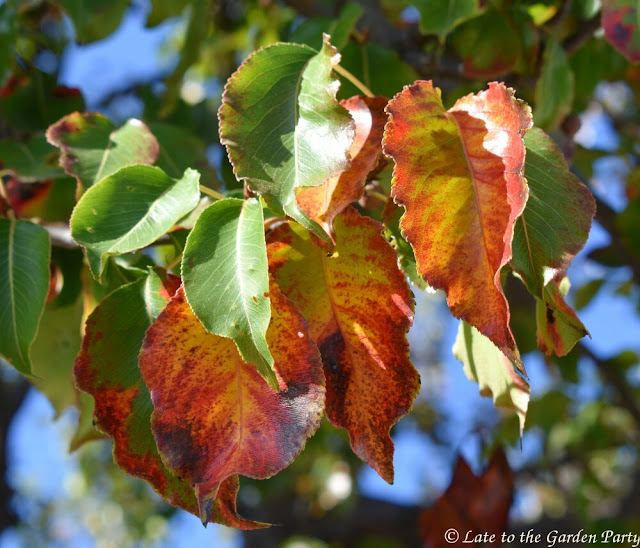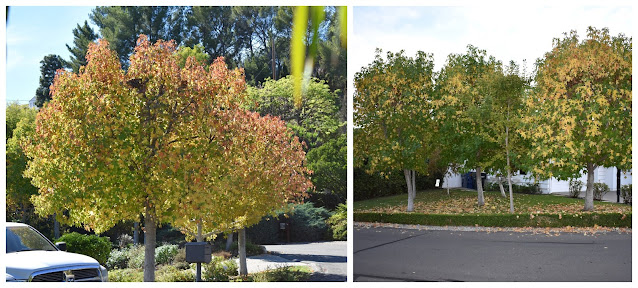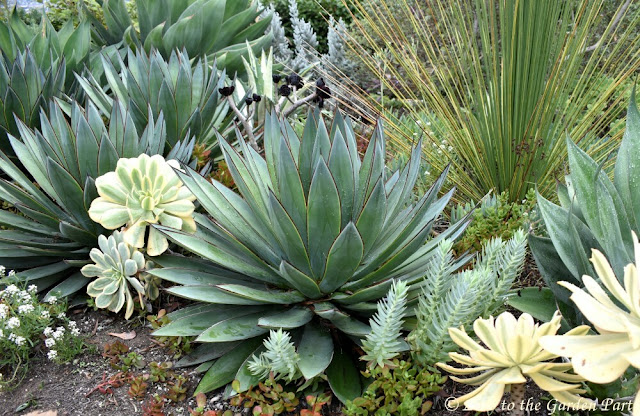I've stayed close to home for the past week, taking advantage of comfortable temperatures to tackle several small garden projects. The project with the biggest impact involved harvesting a large agave "pup" from one section of my garden to fill a vacancy in another. It remains very dry here and the prospects for rain in Southern California aren't especially favorable. Although one expert says he remains "optimistic" that it won't be quite as dry as last year, it's not likely we'll see normal* rainfall either. Given that scenario, it seems reasonable to introduce more succulents.
The mid-section of my backyard border is still fairly bare since I removed several dead and dying shrubs. I planted a Grevillea 'Pink Midget' I purchased at a Santa Barbara garden center in early October in one spot, only to watch it die in record time. The spot in question is particularly dry so I decided an agave might be a better choice. I didn't want a puny specimen that would take years to make a statement and, as good-sized plants generally come with hefty price tags, I decided to shop my own garden. Agave 'Blue Flame' is a prolific pupper and needs regular pruning to remain manageable so it was an obvious choice.
 |
| This "before" shot taken in late September shows the area from which I took the 'Blue Flame' cutting |
 |
| Here's the transplanted "pup" in the back garden border. It's approximately 21 inches tall and 2 feet wide at present. Once it takes hold, it'll start producing its own pups. |
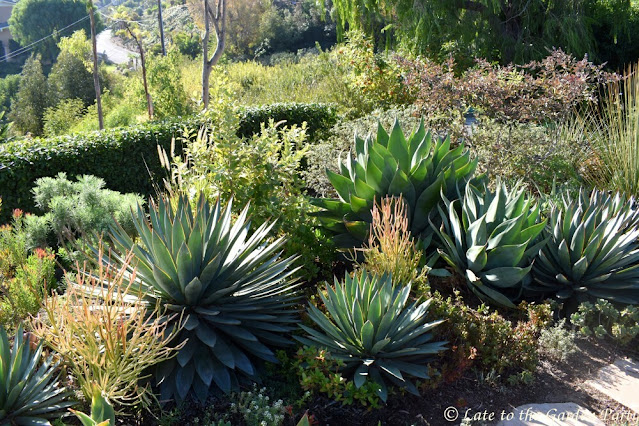 |
| Here's the south side area after the "pup" was removed. I'm not sure most people would know anything had changed. |
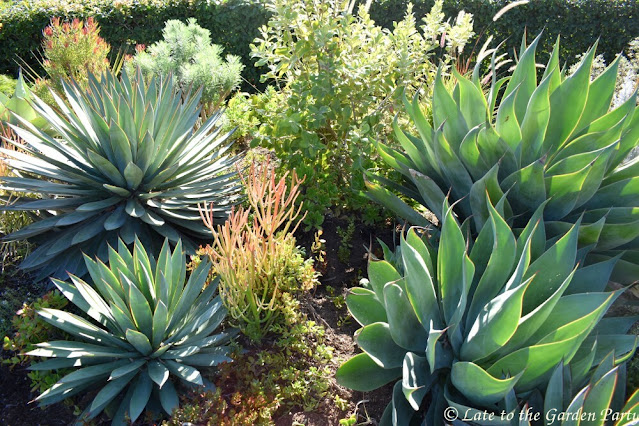 |
| This is a closer look at the spot formerly occupied by the Agave 'Blue Flame" I removed. I planted cuttings of Crassula pubescens ssp. radicans, which in time should spread to fill the space. |
In addition to taking out one large (and very heavy) 'Blue Flame' pup, I removed a clump of Euphorbia tirucalli 'Sticks on Fire' that was encroaching on the largest Agave 'Blue Glow' plus a small Aloe dorotheae 'Sunset' that had been half-buried under the 'Blue Flame'.
 |
| The Aloe pulled apart into 3 distinct pieces, all of which I replanted closer to the bed's edge to give them a better chance to grow and shine |
I also replanted a small area next to the dining room window.
 |
| The sad photo on the left is the only "before" shot I could find. Plectranthus ciliatus 'Zulu Wonder', brought here as a cutting from my former garden, once dominated the far end of the bed, producing lovely lavender flowers in early fall. It'd been declining for years and had been swamped by Campanula portenschlagiana. I took cuttings of the Plectranthus, thinned the Campanula, and removed a couple of straggly ivy geraniums. I planted a small Agave attenuata 'Ray of Light' and a large Tradescantia spathacea 'Sitara's Gold'. |
The Salvia discolor I picked up a couple of weeks ago also found a home.
 |
| I popped the Salvia in a spot formerly occupied by a couple of sad dwarf Verbena bonariensis. The Salvia is already showing a a few of its signature dark purple blooms. |
When I noticed that I'd let the Mexican feathergrass (Nassella tenuissima) get out of control in the border fronting the back hedge, I tackled that too.
 |
| There are a dozen clumps of this grass dotted along the back of the border. I don't have a "before" shot so you'll have to take my word they were a thick matted mess. |
In between these various tasks, I planted two flats of creeping thyme (Thymus serpyllum 'Elfin') to fill in along the flagstone path that bisects the back garden and collected leaves from the deciduous persimmon, ornamental pear, Japanese maple, and Ginkgo trees, running them through my old Black & Decker Leaf Hog to shred them before dumping them in the compost bin.
 |
| This was a time-consuming but otherwise satisfying task |
This morning, our tree service will arrive to trim ten trees and one cherry laurel hedge. They're always careful but there's inevitably some collateral damage so cleaning that up will be my focus this weekend before I shift my attention to the holidays. Can you believe it's almost December? I can't!
*"Normal" (average) annual rainfall for Los Angeles County is
16 inches, most if not all of which falls during the fall and winter months. Rain in our location of SoCal totaled only 4.12 inches in the October 1, 2020-September 30, 2021 "water year."
All material © 2012-2021 by Kris Peterson for Late to the Garden Party






